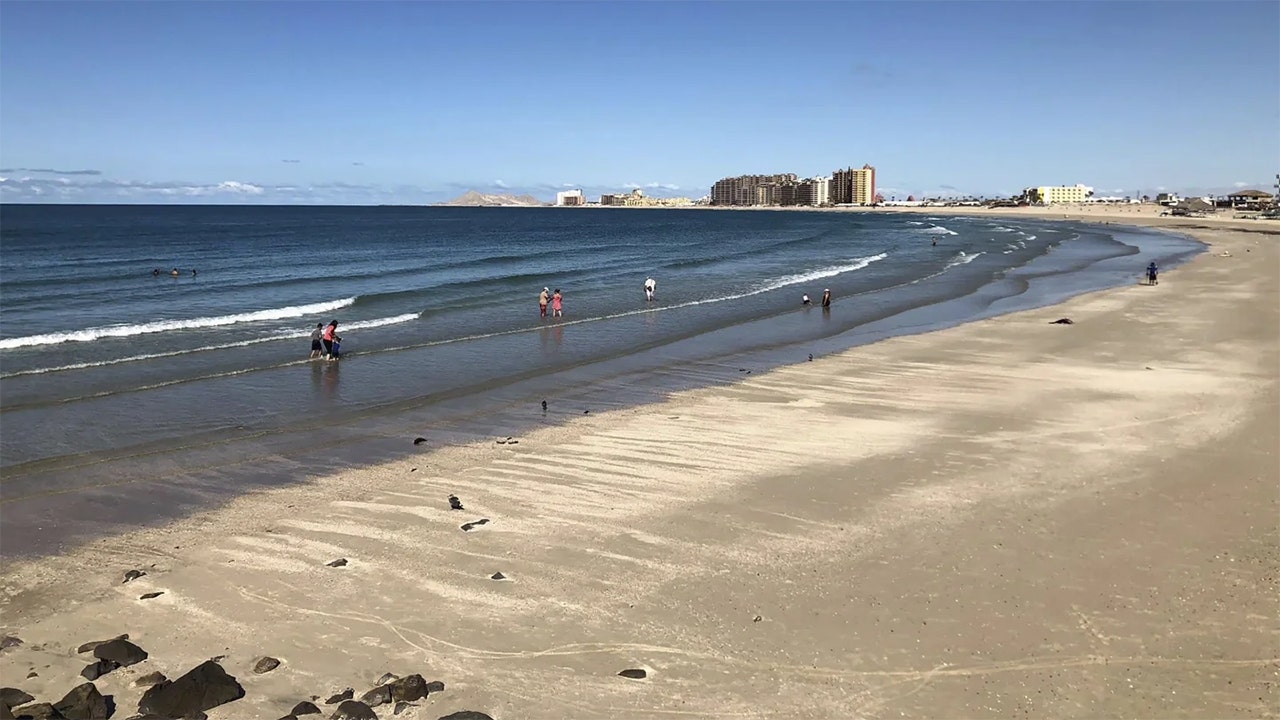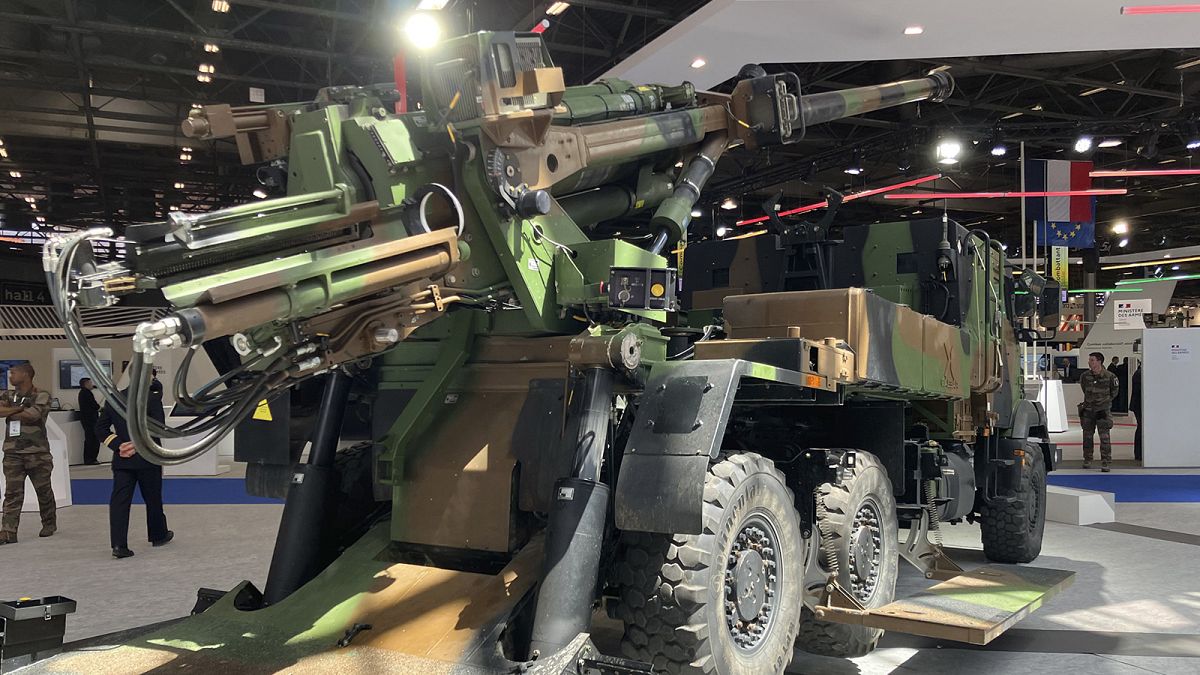California
California Is About To Tax Guns Like It Does Alcohol And Tobacco

Starting in July 2024, California will be the first state to charge an excise tax on guns and ammunition. The new tax — an 11% levy on each sale — will come on top of federal excise taxes of 10% or 11% for firearms and California’s 6% sales tax.
The National Rifle Association has characterized California’s Gun Violence Prevention and School Safety Act as an affront to the Constitution. But the reaction from the gun lobby and firearms manufactures may hint at something else: the impact that the measure, which is aimed at reducing gun violence, may have on sales.
As a professor who studies the economics of violence and illicit trades at the University of San Diego’s Kroc School of Peace Studies, I think this law could have important ramifications.
One way to think about it is to compare state tax policies on firearms with those on alcohol and tobacco products. It’s not for nothing that these all appear in the name of the Bureau of Alcohol, Tobacco, Firearms and Explosives, also known as ATF.

What Alcohol, Tobacco And Firearms Have In Common
That agency, part of the Justice Department, is tasked with making American communities safer. The ATF focuses on those products because, while legal, they can cause significant harm to society — in the form of drunken driving, for example, or cancer-causing addictions. They also have a common history: All have been associated with criminal organizations seeking to profit from illicit markets.
Alcohol and tobacco products are thus usually subject to state excise taxes. This policy is known as a “Pigouvian tax,” named after 20th century British economist Arthur Pigou. By making a given product more expensive, such a tax leads people to buy less of it, reducing the harm to society while generating tax revenue that the state can theoretically use to offset those harms that still accrue.
California, for instance, imposes a $2.87 excise tax on each pack of cigarettes. That tax is higher than the national average but much lower than New York’s $5.35 levy. California also imposed a vaping excise tax of 12.5% in 2021.
Of the three ATF product families, firearms have enjoyed an exemption from California excise taxes. Until now.
The Costs Of Gun Violence
Anti-gun advocates have long called for the firearm industry to lose the special treatment it receives, given the harms that firearms cause. The national rate of gun homicides in 2021 was 4.5 per 100,000 people. This is eight times higher than Canada’s rate and 77 times that of Germany. It translates into 13,000 lives lost every year in the U.S.
Additionally, nearly 25,000 Americans die from firearms suicide each year. This implies a rate of 8.1 per 100,000 per year, exceeding Canada’s by more than four times. Moreover, more people suffer nonfatal firearm injuries than die by guns.


Gun deaths and injuries aren’t just tragic — they’re expensive, too. One economist estimated the benefit-cost ratio of the U.S. firearms industry at roughly 0.65 in 2009. That means for every 65 cents it generates for the economy, the industry produces $1 of costs.
And that back-of-the-envelope calculation may be an underestimate. It included the cost of fatal gun violence committed within the U.S. But the estimate didn’t include nonfatal injuries, or the cost of firearm harms occurring outside the U.S. with U.S.-sold weapons.
Mexico Pays A Steep Price For US Gun Trade
America has been called the world’s gun store. No country knows this better than Mexico. The U.S. endured roughly 45,000 firearms deaths in 2019, while the rest of the world combined saw 200,000. Mexico, which shares a long, permeable border with the U.S., contributed 34,000 to that grisly total.
Mexico’s government estimates that 70% to 90% of traceable guns used in crimes seized in the country come from the United States. Other examples abound. For instance, U.S.-sold guns fuel gang violence in a lawless Haiti.
No investor would back such an industry if they were forced to pay its full cost to society. Yet U.S. gun sales have grown fourfold over the past 20 years to about 20 million guns annually, even though they’re now deadlier and more expensive.
What Alcohol, Tobacco And Firearms Don’t Have In Common
Across the U.S., there’s not a single state where firearms are taxed as much as alcohol and tobacco. I think guns should probably be taxed at a higher level than both of them. That’s because unlike alcohol and tobacco — consumable products that disappear as soon as they’ve been used — firearms stick around. They accumulate and can continue to impose costs long after they’re first sold.
Starting in July, California will tax firearms at about the level of alcohol. But the state would have to apply an excise tax of an additional 26% to equal its effective tax on tobacco.
It’s unclear how the new tax will affect gun violence. In theory, the tax should be highly effective. In 2023, some colleagues and I modeled the U.S. market for firearms and determined that for every 1% increase in price, demand decreases by 2.6%. This means that the market should be very sensitive to tax increases.
Using these estimates, another colleague recently estimated that the California excise tax would reduce gun sales by 30% to 44%. If applied across the country, the tax could generate an additional $1.5 billion to $1.9 billion in government revenue.
One possible problem will come from surrounding states: It’s already easy to illegally transport guns bought in Nevada, where laws are more lax, to the Golden State.
But there’s some evidence that suggests California’s stringent policies won’t be neutralized by its neighbors.
When the federal assault weapons ban expired in 2004, making it much easier to buy AR- and AK-style rifles across much of the U.S., gun murders across the border in Mexico skyrocketed. Two studies show the exception was the Mexican state of Baja California, right across the border with California, which had kept its state-level assault weapons ban in place.
Gun seizures in Mexico show that all four U.S. states bordering Mexico rank in the top five state sources of U.S.-sold guns in Mexico. But California contributes 75% less than its population and proximity would suggest.
So, California laws seem to already be making a difference in reducing gun violence. I believe the excise tax could accomplish still more. Other states struggling against the rising tide of guns will be watching closely.
This article is republished from The Conversation under a Creative Commons license. Read the original article.

Sign up for our FREE morning newsletter and face each day more informed.

California
First California Wildfire a 'Taste of What's to Come'
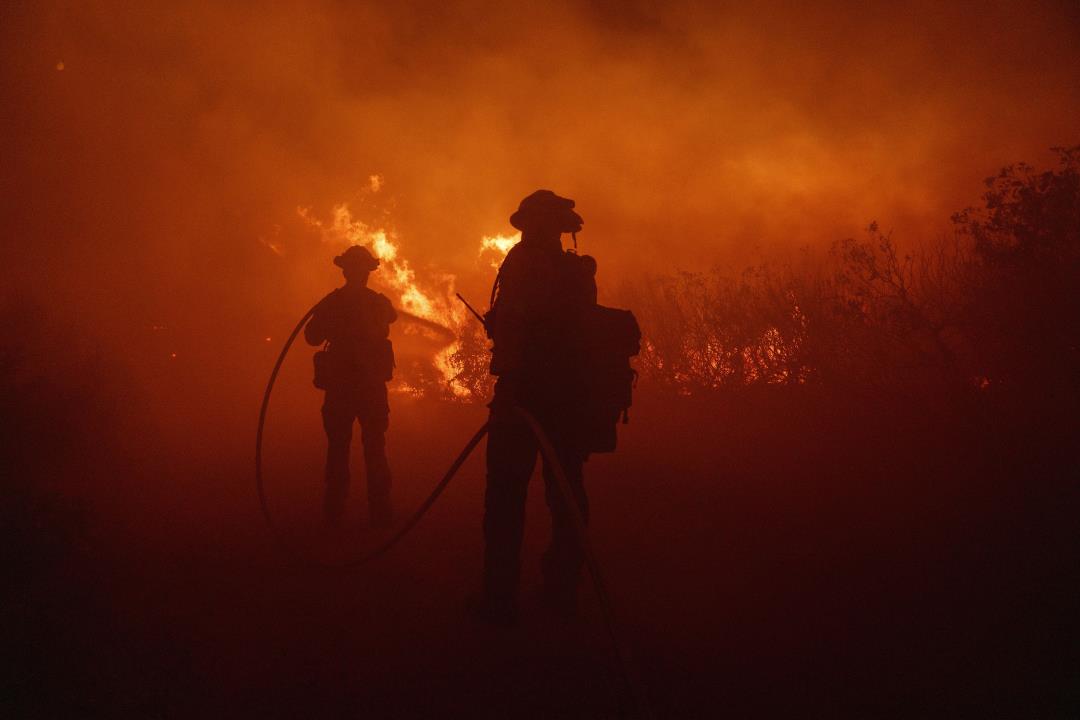
California’s first major wildfire of the season is here, and the newly named Post Fire is not expected to enter the record books in terms of scale or damage. But the nature of the fire in Los Angeles County and the fact that it’s only mid-June nonetheless has scientists and firefighters worried about what’s in store for this summer, reports the New York Times.
- Status: The fire in a mountainous region north of Los Angeles grew to 23 square miles, or roughly 15,000 acres, on Sunday and forced the evacuation of about 1,200 campers, per the AP and the Los Angeles Times. It was only 2% contained as of Sunday evening. No injuries have been reported.
California
RWE to start California offshore wind project surveys
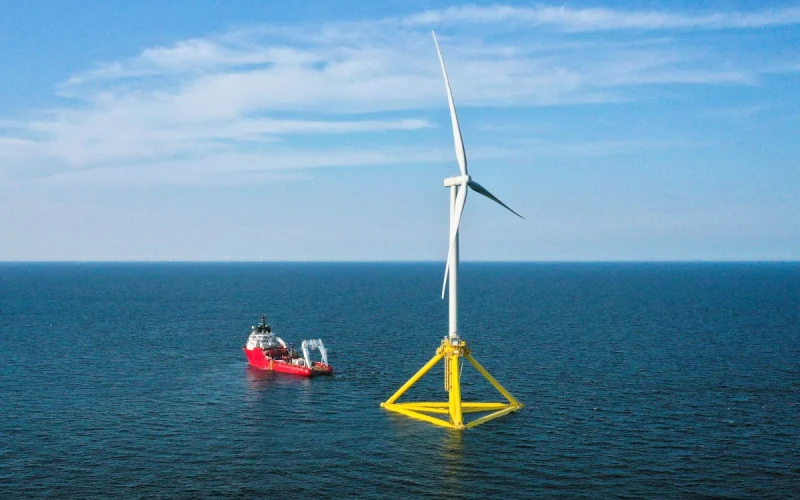
June 16, 2024
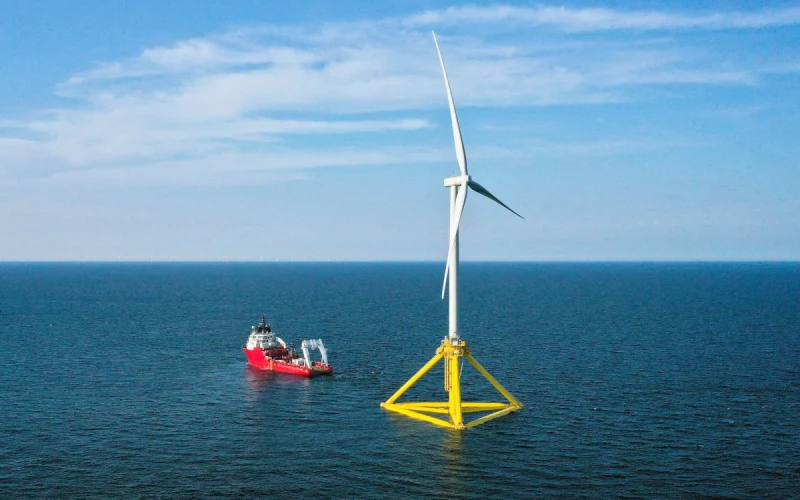
Offshore wind developer RWE announced it will start site investigation surveys for its planed 1.6-gigawatt Canopy Offshore Wind Farm off northern California.
Located 20 miles off Humboldt County, the Canopy project would anchor floating wind turbines on a 63,338-acre lease RWE obtained in a 2022 auction by the federal Bureau of Ocean Energy Management.
“Surveying is an important step on the path toward developing Canopy Offshore Wind and helping provide clean energy that meets California’s ambitious climate goals,” said Sam Eaton, CEO of RWE Offshore Wind Holdings, in a June 12 statement. “RWE is committed to responsible, inclusive development by engaging Humboldt residents, Tribal Nations, and working closely with the fishing community as we begin offshore activities on the project.”
RWE selected subsea service provider Argeo to perform the Canopy site investigation work. “Argeo is pleased to partner with RWE on their first commercial scale floating offshore wind project. We will conduct subsea surveying utilizing proven, state-of-the-art technology,” said Dave Gentle, vice president for North and South America at Argeo.
Argeo will utilize an autonomous underwater vehicle (AUV) to conduct surveys in the Humboldt lease area, where depths range from 500 to 1,100 meters (1,640 to 3,600 feet) according to BOEM.
“The use of an AUV as the survey platform during this initial site characterization effort will enable high-quality data collection close to the seafloor, including photographs of biological communities,” according to a summary by RWE.
Using the autonomous vehicle “significantly reduces the potential for entanglement of fishing gear as they are not towed equipment,” the company says. The sensors carried by the AUV operate at safe sound levels and meet California low energy equipment requirements for geophysical surveys that are in place to minimize impacts to marine mammals and other wildlife.”
Groups opposing offshore wind projects off the U.S. East Coast have worked to tie survey work to whale strandings and deaths. West Coast wind power is just entering that first phase of development, and RWE officials said they are planning to deploy protected species observers on survey vessels.
The company has engaged Geo SubSea and Coastal 35 Consulting to provide PSOs on survey vessels. Smultea Sciences will provide PSO training “to Tribal citizens and Humboldt County community members to increase the involvement and workforce opportunities for individuals who possess local and Indigenous knowledge of the area during the site investigation campaign,” according to RWE.
The first survey work is planned to start in June to map the seafloor and begin assessing best locations for turbines, anchors and cables, and charting habitat and environmental factors.
“Protected Species Observers are an essential part of ensuring site surveys occur safely in a way that avoids interactions with wildlife,” said Jeff Gardner, president of Geo SubSea, in a joint statement with RWE. “They are an important way to ensure offshore wind surveys are conducted in a manner that results in minimal disturbance to the marine ecosystem.”
“The role of the PSO is solely dedicated to monitoring for protected species,” said Jenn Klaib, owner of Coastal 35 Consulting. “PSOs work to enforce environmental regulations that protect marine wildlife and also provide valuable data for Canopy to better understand marine mammals, their habitats, behaviors, and migration routes.”
In April, Smultea Sciences trained 19 members of the local Humboldt and Tribal communities as Protected Species Observers. Several graduates of this program subsequently participated in Global Wind Organization safety training
“The Smultea Sciences team is pleased with the strong turnout of local CalPoly Humboldt and other students, local Tribal members, and community members attending and successfully completing our Marine Protected Species training,” said “It was very fulfilling to share our collective knowledge and experience in my hometown community and to open the door to work opportunities in the realms of marine biology and green energy development for Humboldt residents.”
RWE says its consultations with the northern California fishing industry “resulted in Canopy survey planning intended to avoid and minimize the potential for activity overlap, with activities sequenced in different areas during varying fishing seasons.”
The company is sending local commercial fishermen to Global Wind Organization safety training. Local fishing captains, identified by the area’s fishing industry, “will serve as an Onboard Fisheries Liaison (OFL) on the survey vessel to manage at-sea communication and coordination with the fishing fleet during survey activities,” the company says.
California
Burn permits suspended in multiple Northern California counties as active fire season continues

(FOX40.COM) — As California deals with an active fire season, multiple Northern California counties have suspended burn permits for outdoor residential burning beginning Monday, June 17.
The Cal Fire Amador-El Dorado Unit and the California Department of Forestry and Fire Protection Nevada-Yuba-Placer Unit said the areas included are Alpine, Amador, El Dorado, Sacramento, San Joaquin, Nevada, Yuba, Placer, and Sierra counties.
Cal Fire Amador said the new burn permit restrictions are in addition to those placed in other areas throughout Amador and El Dorado counties on June 10.
“This suspension takes effect Monday, June 17, 2024, at 8 am. and bans all residential outdoor burning of landscape debris such as branches and leaves,” Cal Fire said.
It continued, “While outdoor burning of landscape debris by homeowners is no longer allowed, CAL FIRE is asking residents to take that extra time to ensure they are prepared for wildfires by maintaining a minimum of 100 feet of Defensible Space around every home and building on their property and being prepared to evacuate if the time comes.”
The announcement comes as Northern California has dealt with an active fire season, including a recent 800-acre fire in Sacramento, a 1,000-acre fire in Butte County, and a 14,000-acre fire in San Joaquin County before July 1.
Some tips offered by Cal Fire to help Californians prepare their homes and property for fires include:
- Clear all dead and or dying vegetation 100 feet from around all structures.
- Landscape with fire-resistant plants and non-flammable ground cover.
- Find alternative ways to dispose of landscape debris like chipping or hauling it to a biomass energy or green waste facility.
-

 Politics1 week ago
Politics1 week agoNewson, Dem leaders try to negotiate Prop 47 reform off California ballots, as GOP wants to let voters decide
-

 World1 week ago
World1 week ago‘Bloody policies’: Bodies of 11 refugees and migrants recovered off Libya
-

 Politics1 week ago
Politics1 week agoGun group vows to 'defend' Trump's concealed carry license after conviction
-

 Politics1 week ago
Politics1 week agoShould Trump have confidence in his lawyers? Legal experts weigh in
-

 Politics7 days ago
Politics7 days agoGOP releases Jan. 6 clip of Pelosi saying 'I take responsibility' as she discussed National Guard absence
-

 Movie Reviews1 week ago
Movie Reviews1 week ago‘Darkest Miriam’ Review: Britt Lower in a Marvel of a Drama About a Young Librarian’s Loves and Fears
-

 World1 week ago
World1 week agoOrban party loses major support in Hungary's EU election
-

 News1 week ago
News1 week agoTrump to escalate blame on trial judge Juan Merchan if sentenced to prison




/cdn.vox-cdn.com/uploads/chorus_asset/file/23612558/Apple_WWDC22_iOS16_CarPlay_220606.jpg)
